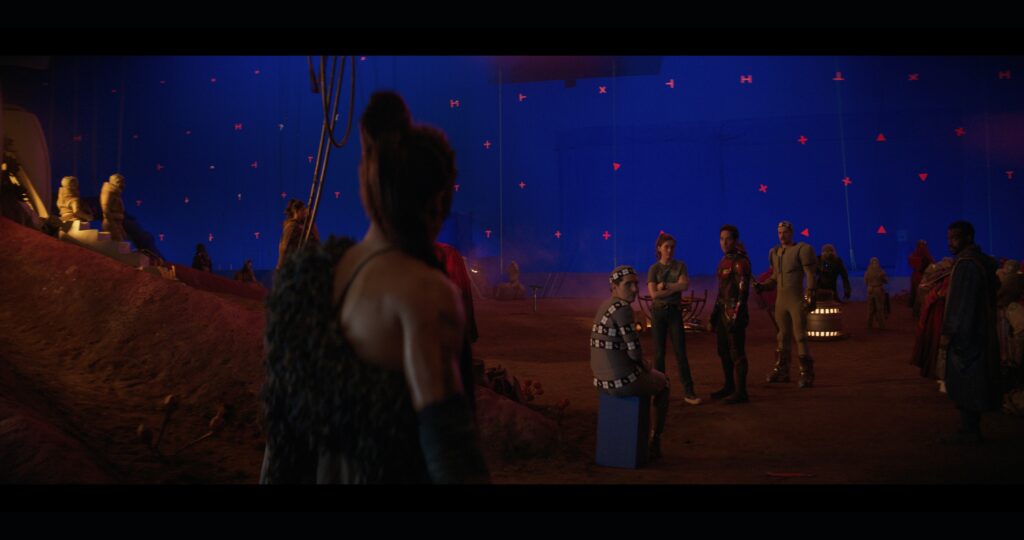
The latest film released in the Marvel Cinematic Universe is Ant-Man and The Wasp: Quantumania. Led by VFX supervisors Malte Sarnes and Axel Bonami, the visual effects work for the film was a collaborative effort between MPC’s Adelaide, Montreal, Bengaluru and LA teams. The VFX teams used the latest tools and artistry to create the film’s breathtaking visuals, with over 1,000 artists delivering 800 plus shots.
MPC Adelaide’s concept art team, under the supervision of art director Nicholas Pill, and LA’s concept art team, led by art director Leandre Lagrange, were tasked with designing the background for a specific location in the Quantum Realm, Guerilla Village. To visualise this environment, the team researched microscopic, subatomic and neural network references, as well as artists such as Gerard van Smirren. Since Guerilla Village is a hideout, the team’s designs conveyed a sense of protection and secrecy.
MPC Montreal’s artists worked on two large-scale full CG environments, the Guerilla Village and Chronopolis. Both scenes involved two large-scale battle sequences featuring CG crowds, an army of battle ants and hundreds of FX elements seamlessly integrated into the plate. They were also tasked with creating the character Veb, voiced by actor David Dastmalchian. MPC’s modelling and texture artists researched creatures like jellyfish to create Veb’s translucent skin, while animators were faced with the challenge of how to convey the character’s emotion.


The Adelaide team worked on multiple sequences within the Quantum Realm, including Hank and MODOK’s Aerial fight, Cassie’s Transmission, Janet’s Homestead, the Observation Deck sequence, and the Blight approach. The FX department created a variety of simulations including explosions, energy effects, laser beams and refractive energy.


To create the homestead environment, MPC’s assets department built a library of detailed CG foliage and vegetation to distribute throughout the environment, added depth with multiple layers. The Quantum Realm environments built by MPC spanned over 40 kms in diameter and included 20 kms of quantum skies. These skies include numerous effects such as slow-moving portals, stars, noise waves and clouds.
The most challenging work was the blight, which involved large-scale environmental destruction, as well as the blight retraction and its reversed environmental effects.


Another major task for MPC was Kang’s transformations, the look development for his mask, and powers including force fields and laser beams. The studio also created various creatures including variations of ants (including armoured ants carrying objects on their backs and repairing Hank’s ship using welding tools), snail-like horses named Snorses, digital doubles and vehicles.
Production VFX supervisor Jesse J. Chisholm said, “MPC Adelaide was given the daunting task of presenting the first sequence of images in our film. This was our first look at the newly designed Quantum Realm. If our audience didn’t buy this as a real place, we knew our movie would fall on its face. The next undertaking was to create Kang’s suit transformation and his ship, the Timesphere. Malte and his team once again perfectly integrated the plate-based photography and CGI to give our audience something tactile to bite into. The last piece of the puzzle was the creation of the blighted core and the following sequence on the observation deck. The observation deck scene required heavy storytelling in making our world feel dangerous, but also great restraint in world building allowing Scott and Cassie a moment of emotional connection.”
Ant-Man and The Wasp: Quantumania stars Paul Rudd in the lead and is directed by Peyton Reed.

